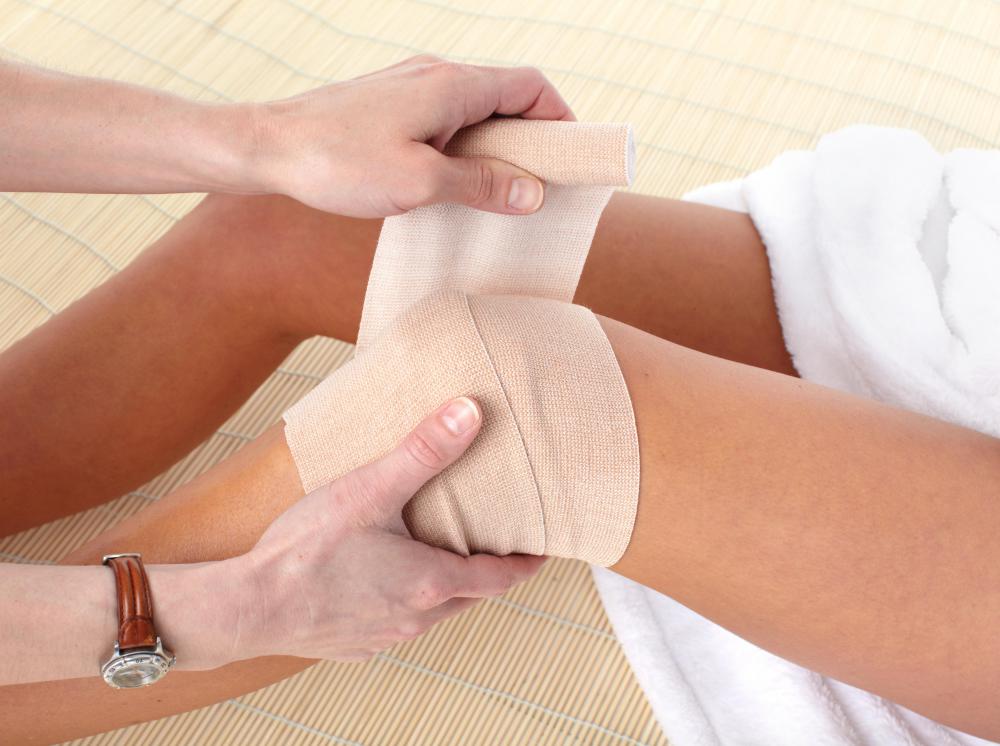At WiseGEEK, we're committed to delivering accurate, trustworthy information. Our expert-authored content is rigorously fact-checked and sourced from credible authorities. Discover how we uphold the highest standards in providing you with reliable knowledge.
What is Meniscus Removal?
Meniscus removal, also called a meniscectomy, is a minimally invasive surgical procedure performed to remove torn cartilage from the knee joint. Removing the meniscus, or cartilage, is generally the treatment of choice when the damage causes pain, swelling, or instability in the knee joint. Meniscus arthroscopy is generally preferred over standard open knee surgery because recovery time is shorter.
Meniscus removal surgery utilizes a scope, or camera, to look inside the knee joint. Typically, the surgeon creates a small incision on the knee, and then inserts the camera into the joint. By utilizing a series of additional small incisions, the surgeon manipulates other surgical instruments into the knee to gradually and carefully remove the damaged meniscus. The procedure may be performed under a local or general anesthetic. Local anesthetic numbs the knee area, while general anesthesia puts the patient to sleep.

Postoperatively, the incisions are typically sutured or closed with paper tape and dressed with sterile bandages. The patient usually spends approximately two hours in the recovery area, so he can be monitored for pain, bleeding, and abnormal vital signs. Generally, if the patient is in stable condition, he will be discharged. Driving is not allowed upon discharge, so the patient will be released to a designated driver.

After meniscus removal, pain typically is minimal. Common treatments for postoperative knee surgery pain include anti-inflammatory or other analgesics, icing the knee four times a day, and keeping the knee elevated. Severe pain, swelling, and bleeding should be immediately reported to the surgeon. In rare circumstances, the patient may report fever and chills, which may indicate signs of infection. Most often, if the patient reports these symptoms to the surgeon, he will prescribe oral antibiotics.

Usually, meniscus removal patients recover quickly. Most patients begin normal walking in a few days, as long as severe pain is not present. Running and sports activity may resume in approximately eight weeks. During the recovery period, the surgeon may recommend physical rehabilitation or therapy. Based on the patient's progress, pain level, and range of motion, therapy may be prescribed. Therapy generally helps restore range of motion, mobility and strength or is sometimes used for symptomatic relief of pain and swelling.

Most meniscectomy patients respond well to physical therapy. Usually, as the pain and swelling resolves, range of motion will increase, making it easier for the patient to perform his strengthening exercises. Many exercise and therapy programs can be done at home, but others may warrant outpatient therapy visits. Although postoperative meniscus removal rehabilitation carries minimal risk, the patient is advised to call his surgeon in the event of severe pain or swelling.
AS FEATURED ON:
AS FEATURED ON:

















Discuss this Article
Post your comments